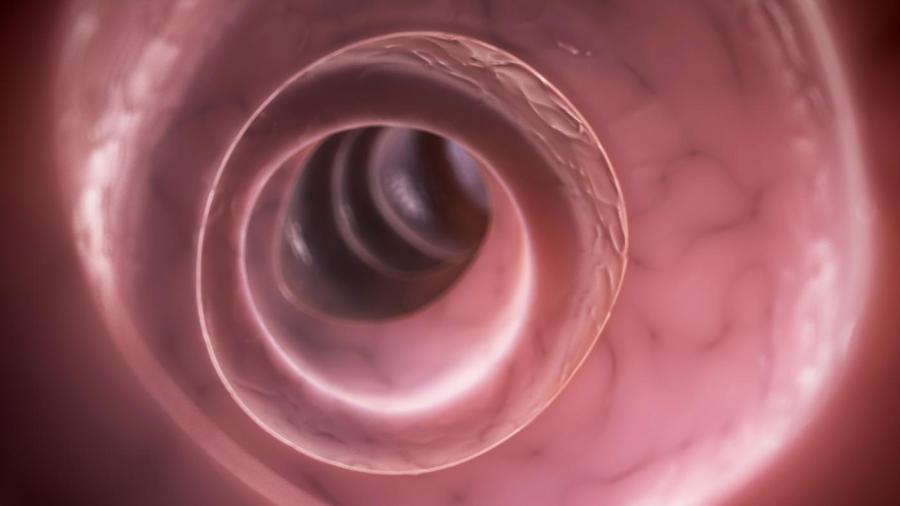How Long Can the Human Intestine Stretch?

The combined length of the small and large intestines averages 25 feet long. Individually, the uncoiled small intestine has an average length of 20 feet, while the large intestine has an average length of 5 feet. The length of the intestines allows for enough time for nutrients to be absorbed before waste is expelled from the body.
The small and large intestines form a continuous tube that runs from the stomach to the anus. The function of the small intestines is to absorb water and nutrients from digested food. This absorption process is carried out by tiny projections lining the folds of the small intestine called villi and microvilli. Each individual villus and microvillus is attuned to a specific nutrient needed by the body. The nutrients absorbed by the villi and microvilli pass through the walls of the small intestine and into the bloodstream to be distributed throughout the body. The digestive process can take several hours. Food that cannot be digested is passed into the large intestine. The function of the large intestine is to remove excess water from undigested food in order to produce feces. The process of moving waste through the large intestines can take days to complete.





